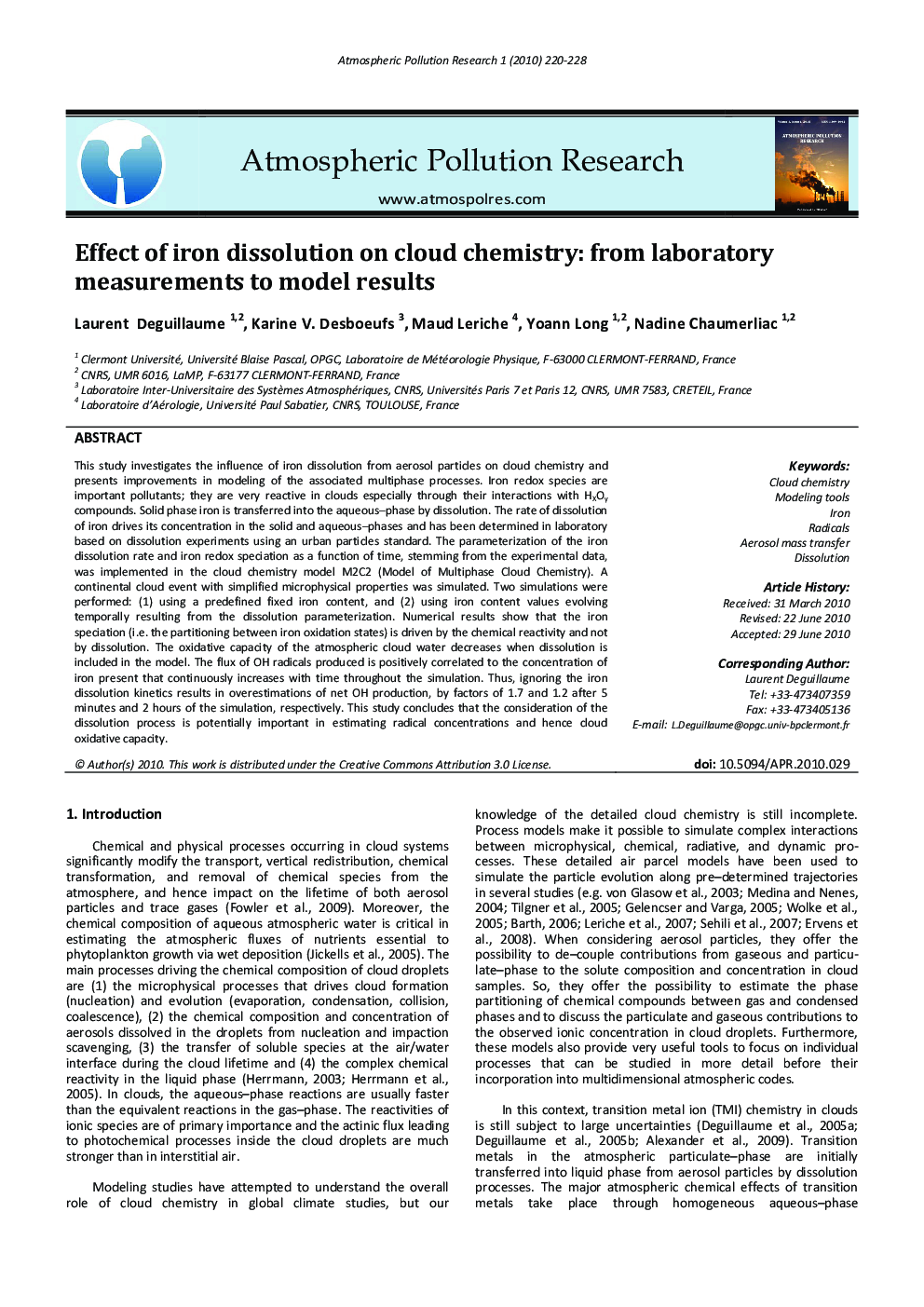| کد مقاله | کد نشریه | سال انتشار | مقاله انگلیسی | نسخه تمام متن |
|---|---|---|---|---|
| 4435034 | 1310541 | 2010 | 9 صفحه PDF | دانلود رایگان |

This study investigates the influence of iron dissolution from aerosol particles on cloud chemistry and presents improvements in modeling of the associated multiphase processes. Iron redox species are important pollutants; they are very reactive in clouds especially through their interactions with HXOy compounds. Solid phase iron is transferred into the aqueous–phase by dissolution. The rate of dissolution of iron drives its concentration in the solid and aqueous–phases and has been determined in laboratory based on dissolution experiments using an urban particles standard. The parameterization of the iron dissolution rate and iron redox speciation as a function of time, stemming from the experimental data, was implemented in the cloud chemistry model M2C2 (Model of Multiphase Cloud Chemistry). A continental cloud event with simplified microphysical properties was simulated. Two simulations were performed: (1) using a predefined fixed iron content, and (2) using iron content values evolving temporally resulting from the dissolution parameterization. Numerical results show that the iron speciation (i.e. the partitioning between iron oxidation states) is driven by the chemical reactivity and not by dissolution. The oxidative capacity of the atmospheric cloud water decreases when dissolution is included in the model. The flux of OH radicals produced is positively correlated to the concentration of iron present that continuously increases with time throughout the simulation. Thus, ignoring the iron dissolution kinetics results in overestimations of net OH production, by factors of 1.7 and 1.2 after 5 minutes and 2 hours of the simulation, respectively. This study concludes that the consideration of the dissolution process is potentially important in estimating radical concentrations and hence cloud oxidative capacity.
Journal: Atmospheric Pollution Research - Volume 1, Issue 4, October 2010, Pages 220–228